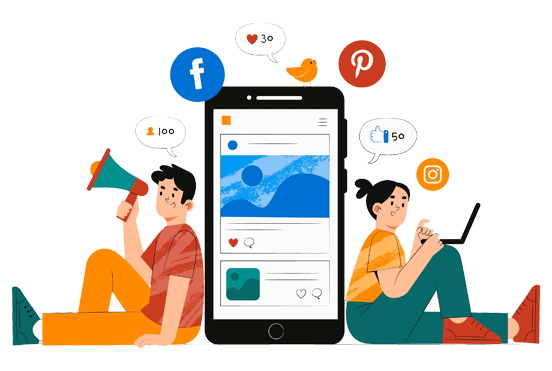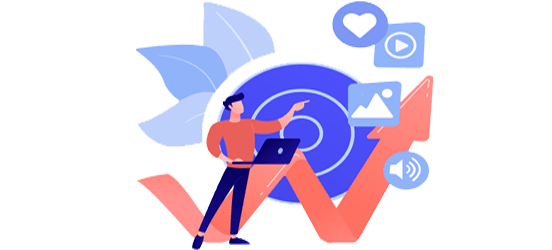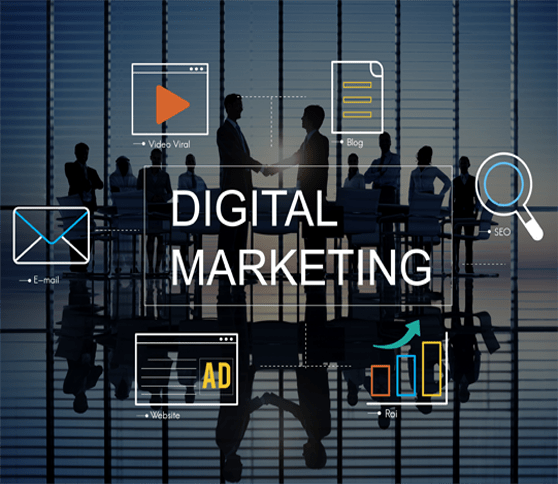Search Engine Optimization (SEO):
SEO is a fundamental part of digital marketing because people conduct trillions of searches every year, often with commercial intent to find information about products and services. Search is often the primary source of digital traffic for brands and complements other marketing channels. Greater visibility and ranking higher in search results than your competition can have a material impact on your bottom line.
However, the search results have been evolving over the past few years to give users more direct answers and information that is more likely to keep users on the results page instead of driving them to other websites.
Also note, features like rich results and Knowledge Panels in the search results can increase visibility and provide users more information about your company directly in the results.
In sum, SEO is the foundation of a holistic marketing ecosystem. When you understand what your website users want, you can then implement that knowledge across your campaigns (paid and organic), across your website, across your social media properties, and more.


Search Engine Marketing (SEM)
Search engines use complicated algorithms to ensure the most relevant results are returned for each search, including location and other available information. In paid search advertising, sponsored ads appear at the top of and on the side of search engine results pages to gain more visibility and prominence than the organic results .Let’s say that you are a customer looking for a product or service online. You go to a search engine and type in your search terms (also known as keywords).
In your search results page, you will come across various company ads whose keywords match the keywords in your search .These ads appear in prominent locations on the page – along with the other search listings that match your keywords. The paid listings are highly relevant to your specific search, making it likely that you will click on them .Now let’s take a look at how SEM campaigns work from the marketer’s perspective.SEM networks are self-serve operations. Once a marketer selects a network, they can get a campaign up within a short period of time.
Ad words
Google Ads is an online advertising platform developed by Google, where advertisers bid to display brief advertisements, service offerings, product listings, or videos to web users.
It can place ads both in the results of search engines like Google Search and on non-search websites, mobile apps, and videos.


Pay Per Click (PPC)
Pay per click (PPC) is an advertising model that lets advertisers place ads on an advertisement platform and pay the host of the platform when their ad is clicked .
The goal of the ad is to lead the user who clicks to the advertiser’s website or app, where the user can complete a valuable action such as purchasing a product .
Search engines are popular host platforms as they allow advertisers to display ads relevant to what users are searching for .
Advertising services like Google Ads and Microsoft Ads operate with real-time bidding (RTB), where advertising inventory is sold in a private automated auction using real-time data.
Website Strategy
A website is good for business. But, a strategic website that aligns with your business and marketing goals is great for business. Whether you are getting ready to launch a website or you already have an existing site, your business needs to develop a website strategy that elevates the effectiveness of your website and makes it more useful to you and your customers.Let’s look at what a website strategy is, why you need one, and how you can develop one in four simple steps.
What is a website strategy?
It’s not enough for your website to look good. It also needs to work well — and that means successfully engaging audiences and driving them through a funnel that leads them to take steps toward working with your brand.


Social Media Marketing (SMM)
Social media marketing (SMM) is a form of internet marketing that uses social media apps as a marketing tool.
These social media platforms enable brands to connect with their audience to:
and build a community of followers to share and engage with content.
Producing relevant content that users will share with their own networks helps brands increase their exposure. It also extends their reach toward fans, potential customers and even potential employees when used as a recruitment tool.
Re-targeting
There’s much debate about user acquisition versus retargeting, which usually come down to lifetime value (LTV) and ROAS. For app marketers, this poses an important question: why spend money on driving new users when you could spend the same, or much less, on those who are (or have been) further down the funnel? While a balanced approach works best, the efficacy of retargeting can’t be ignored.
It’s a successful strategy used by thousands of marketers every day, as it targets near-organic users with messages, ads, and push notifications centered on the next stage of the process. It’s important to remember that while interest may not guarantee conversions, retargeting does help to keep your brand top-of-mind, prompting users to get to the point of conversion when they’re already very close.


Email and Mobile marketing
A Mobile Email Strategy covers how a brand will make use of the smartphone in the pocket of their (potential) customers. A smartphone or tablet allows people to go on the web, search, receive social status updates, read email and use all kinds of apps.
The smartphone is a Digital Swiss Army Knife, a desktop-nano on the go. The mobile phone changes the way people will interact with brands, in stores, with friends and family, their work and lastly with your email program.
The challenge of a good Mobile Email strategy is to recognise these changes and utilize the new possibilities to reach your (email) marketing and business goals.
Content Generation and Optimization
Content optimization is the process of making sure content is written in a way that it can reach the largest possible target audience. The process of optimizing content should include making sure associated keywords are present, adding meta and title tags, and relevant links.
You should also optimize headlines for increased CTRs and visual images for increased user engagement


Quality Link Building
You’ve created content that people are searching for, that answers their questions, and that search engines can understand, but those qualities alone don’t mean it’ll rank. To outrank the rest of the sites with those qualities, you have to establish authority.
That can be accomplished by earning links from authoritative websites, building your brand, and nurturing an audience who will help amplify your content. Google has confirmed that links and quality content (which we covered back in Chapter 4) are two of the three most important ranking factors for SEO.
Trustworthy sites tend to link to other trustworthy sites, and spammy sites tend to link to other spammy sites.
Affiliate Marketing
Affiliate Marketing is an advertising model in which a company compensates third-party publishers to generate traffic or leads to the company’s products and services. The third-party publishers are affiliates, and the commission fee incentivizes them to find ways to promote the company.
KEY TAKEAWAYS
• Affiliate marketing is a marketing scheme in which a company compensates partners for business created from the affiliate’s marketing tactics.
• Digital marketing, analytics, and cookies have made affiliate marketing a billion-dollar industry.
• Firms typically pay affiliates per sale and less frequently by clicks or impressions.
• The three main types of affiliate marketing are unattached affiliate marketing, involved affiliate marketing, and related affiliate marketing.


Integrated digital marketing is, as it sounds, the integration of multiple marketing strategies to form a cohesive online approach for your business. Here’s what it typically entails:
The idea behind integrated digital marketing is that, while each individual strategy doesn’t have a huge impact on its own, when used in conjunction, you can create a more influential online presence.
And it’s not just some passing fad. It’s pretty much the status quo when it comes to tackling the digital realm. Of course, there are still one-off campaigns out there, but most agencies are moving toward integrated solutions, as a well-rounded marketing strategy provides better visibility and ROI for businesses online.
Stay up to date with latest technology trends and insights!
Copyright © 2021 Affsoft. All Rights Reserved | Privacy and Cookies